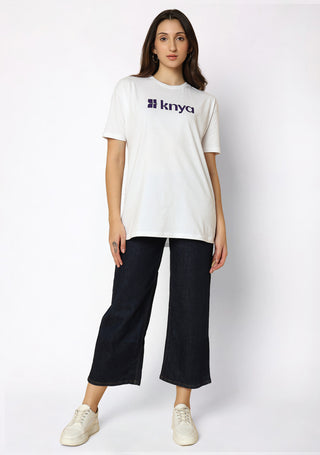Scrub suits have transformed the world in more ways than one. They have set new hygiene standards, improved workplace comfort, enhanced professional identity, and even contributed to sustainability efforts. Their impact goes beyond hospitals, benefiting multiple industries and ensuring the safety of workers and those they serve.As technology and design continue to evolve, scrubs will only become more efficient, durable, and comfortable. Whether in a hospital, lab, or veterinary clinic, scrub suits remain an essential part of modern professional life changing the world for the better, one uniform at a time.
The Evolution of Scrub Suits
The journey of scrub suits began in the early 20th century when doctors and nurses realized the importance of sterile environments during surgeries. Before scrubs, medical professionals wore regular clothes, increasing the risk of infections. By the 1940s, the concept of surgical attire emerged, initially in the form of white gowns. However, white was soon replaced by green and blue because they reduced eye strain and improved visibility in the operating room.
Over time, scrub suits became a standard uniform, not just for surgery but for healthcare professionals across all specialties. Their functionality, ease of maintenance, and affordability led to widespread adoption. Today, scrubs are used in multiple industries, ensuring cleanliness and professionalism in various workplaces.
Hygiene and Infection Control
One of the most significant ways scrub suits have improved the world is by enhancing hygiene and infection control. In healthcare settings, where exposure to bacteria, viruses, and bodily fluids is common, scrubs act as a protective barrier. Unlike regular clothing, scrubs are made from materials that can withstand high-temperature washing and disinfection, reducing the spread of pathogens.
Medical professionals frequently change into freshly laundered scrubs before entering sterile environments, minimizing contamination risks. Additionally, disposable scrub suits have become popular in high-risk settings, further improving hygiene standards.
Comfort and Functionality
Scrub suits are designed with comfort and practicality in mind. Healthcare professionals, lab workers, and veterinary staff spend long hours on their feet, often in high-stress environments. The loose fit and breathable fabric of scrubs ensure ease of movement and all-day comfort.
Pockets and adjustable waistbands make scrubs highly functional, allowing professionals to carry essential tools like pens, gloves, and medical instruments. Unlike formal attire, which can be restrictive, scrubs provide flexibility, improving workplace efficiency.
Ready to explore our amazing scrubs collection? Browse the best here
Psychological and Professional Impact
Uniforms play a crucial role in shaping workplace culture and perception. Scrubs create a sense of professionalism and unity among medical teams. Patients often associate scrubs with trust, safety, and competence, making them an essential part of healthcare branding.
Different colors and designs also help distinguish roles within hospitals. For instance, nurses may wear one color while doctors wear another, allowing for quick identification. Pediatric hospitals have even introduced fun and colorful scrub patterns to make children feel more at ease during medical visits.
Cost-Effectiveness and Sustainability
Compared to traditional uniforms, scrubs are cost-effective and easy to maintain. Hospitals and clinics can provide scrubs in bulk without excessive expenses. Their durability ensures that they last longer, reducing the need for frequent replacements.
Additionally, modern scrubs are increasingly designed with eco-friendly materials, contributing to sustainability efforts. Some manufacturers produce scrubs from recycled materials or organic fabrics, lowering the environmental impact of medical attire.
Expansion Beyond Healthcare
While scrubs are synonymous with healthcare, their influence has expanded into other industries. Laboratory workers, veterinarians, dental professionals, and even beauty and spa employees have adopted scrubs due to their practicality and hygiene benefits.
During the COVID-19 pandemic, many frontline workers, including cleaning staff and emergency responders, wore scrubs as protective clothing. This further reinforced the importance of scrubs in maintaining hygiene and safety in high-risk environments.
Shop the Best Lab Coats from Here!
Technological Advancements in Scrub Suit Design
The latest innovations in scrub design have made them even more effective. Antimicrobial scrubs, which reduce bacterial growth on fabric, have gained popularity in hospitals. Moisture-wicking and odor-resistant scrubs keep professionals comfortable during long shifts.
Some companies have even introduced smart scrubs with integrated RFID (Radio-Frequency Identification) tags for inventory tracking and hospital security. These innovations improve efficiency while maintaining the core purpose of scrubs hygiene and functionality.
Psychological Comfort for Patients
Beyond being practical for healthcare professionals, scrubs provide psychological comfort to patients. Seeing a nurse or doctor in a clean, well-maintained scrub suit reassures patients that they are in a safe and professional environment.
This is especially important in pediatric and geriatric care, where patients are often anxious. Hospitals that use bright, cheerful scrubs for pediatric wards have reported that children feel less intimidated and more cooperative during treatments.
A Symbol of Respect and Dedication
Scrub suits are more than just a uniform; they represent dedication, hard work, and compassion. The sight of a medical professional in scrubs often invokes gratitude and admiration.
During the pandemic, people around the world clapped for healthcare workers wearing scrubs, recognizing their tireless efforts. The scrub suit has become a universal symbol of selflessness and care, reinforcing the respect society holds for medical professionals.





















































